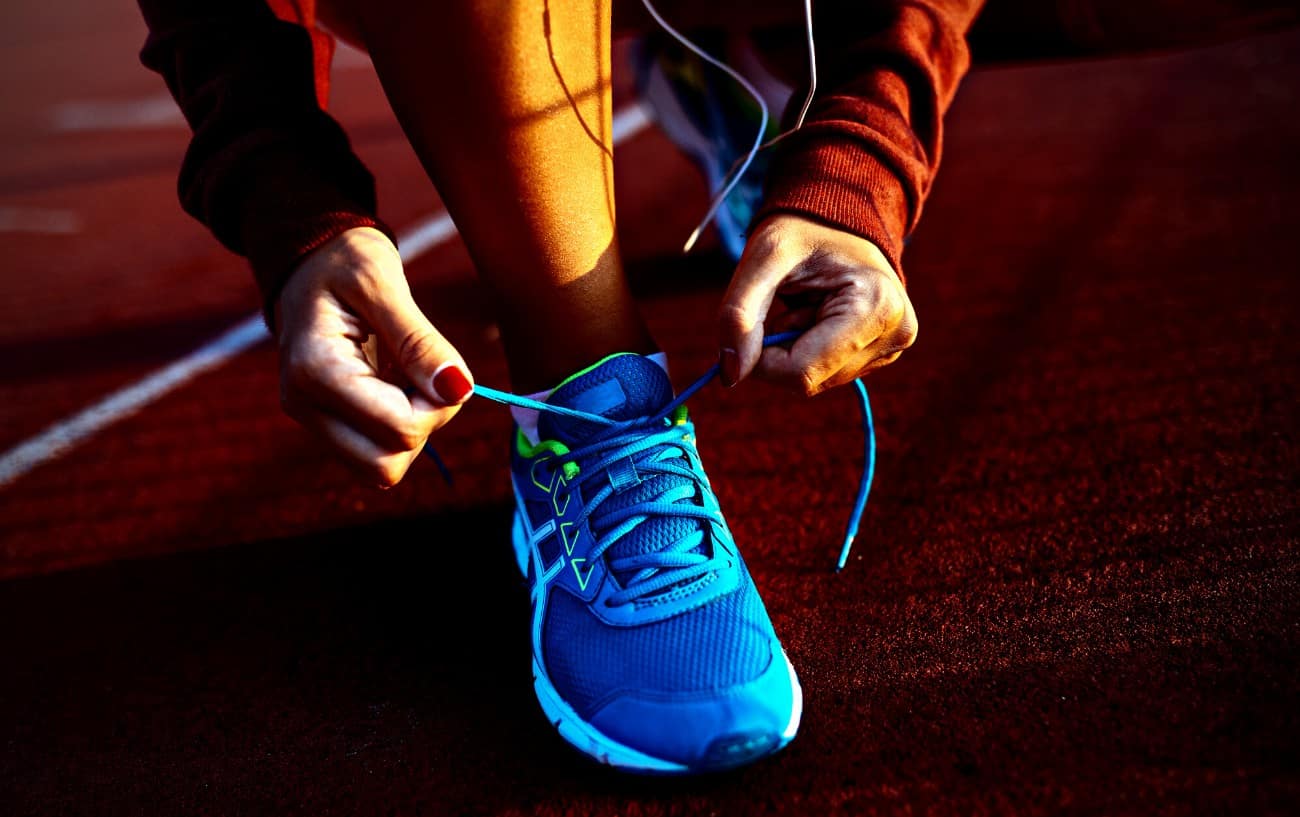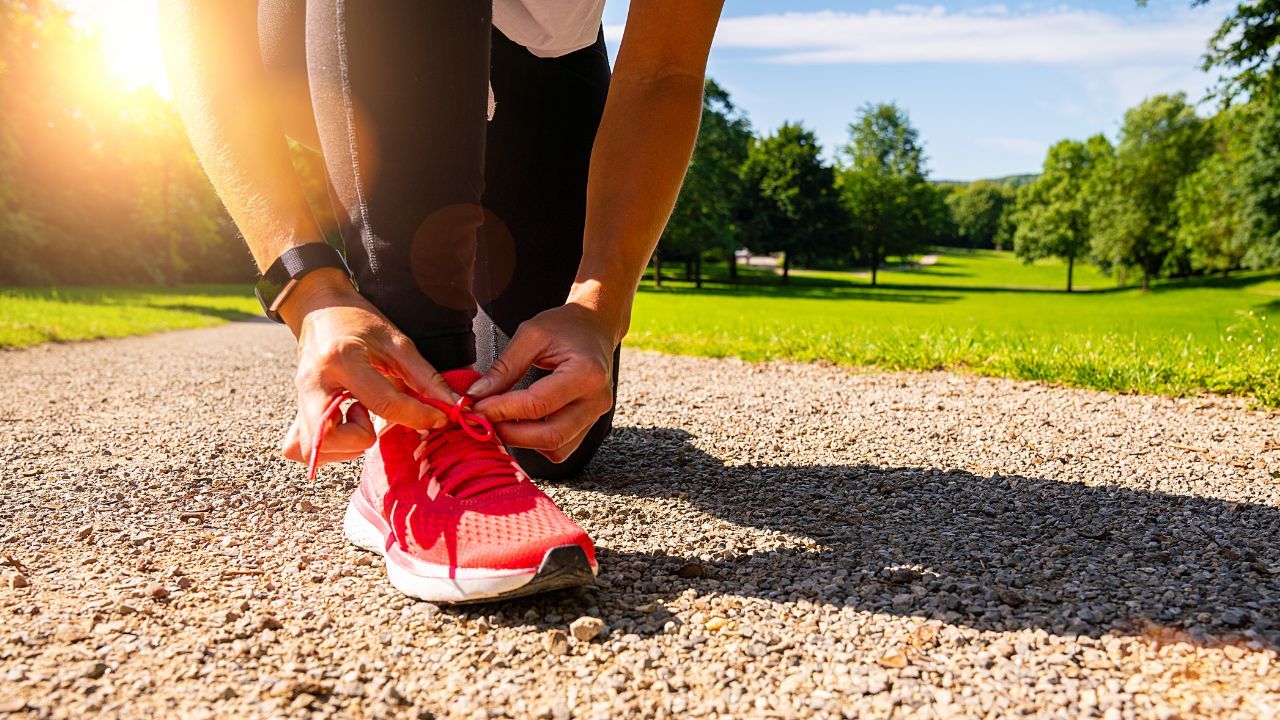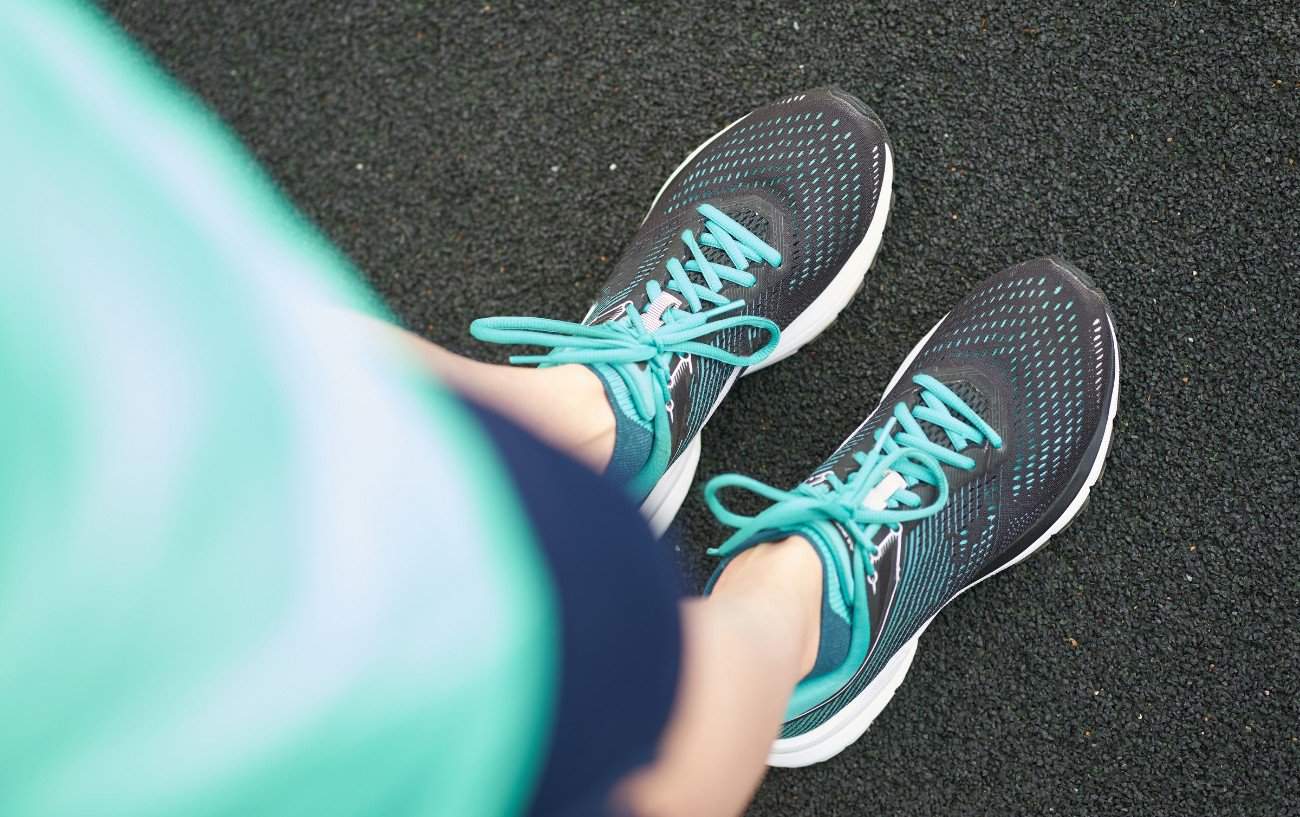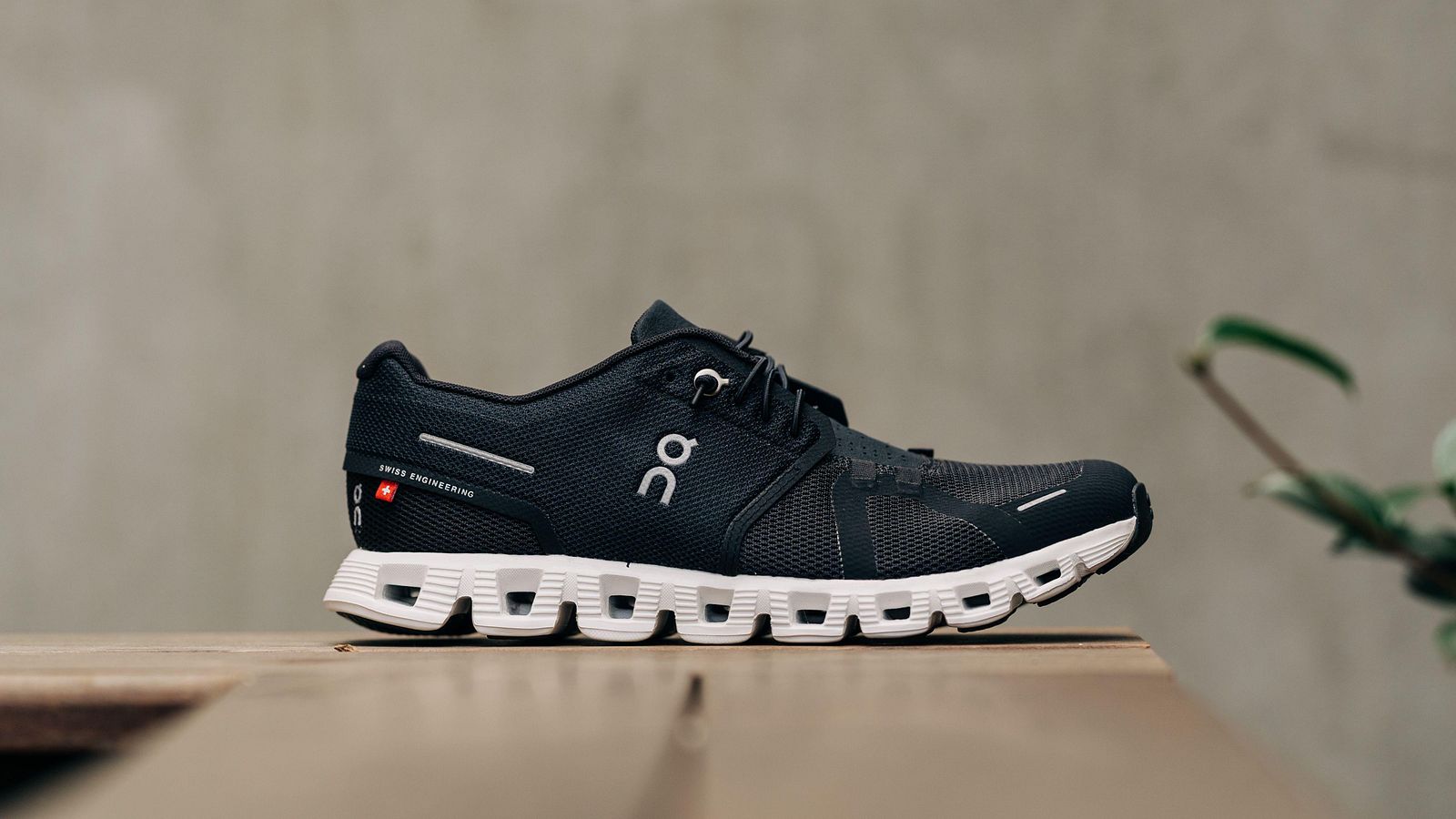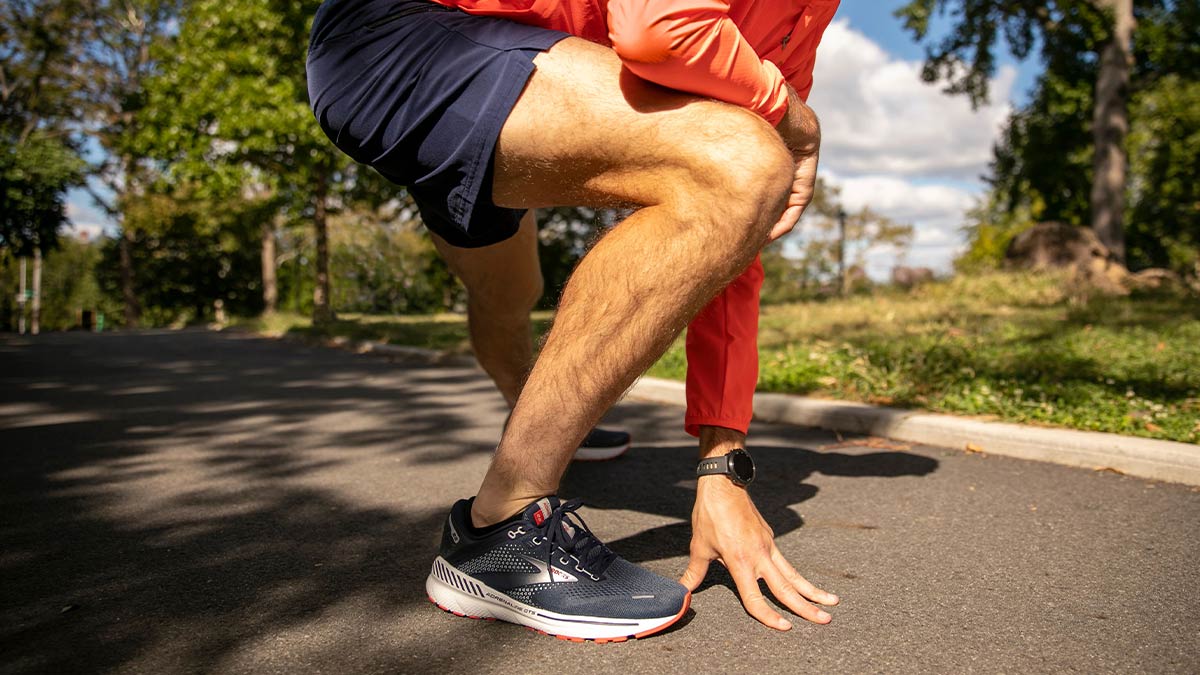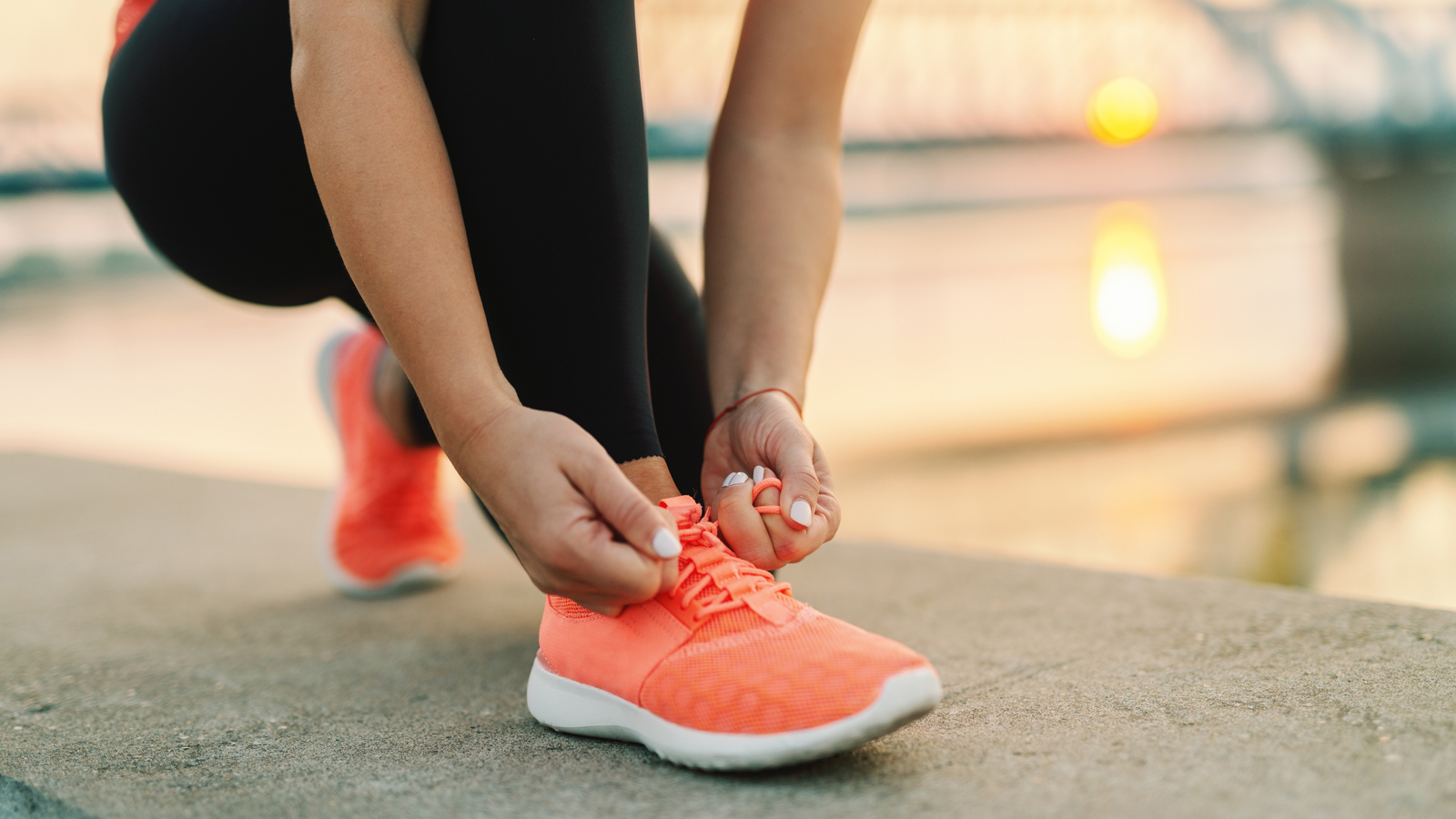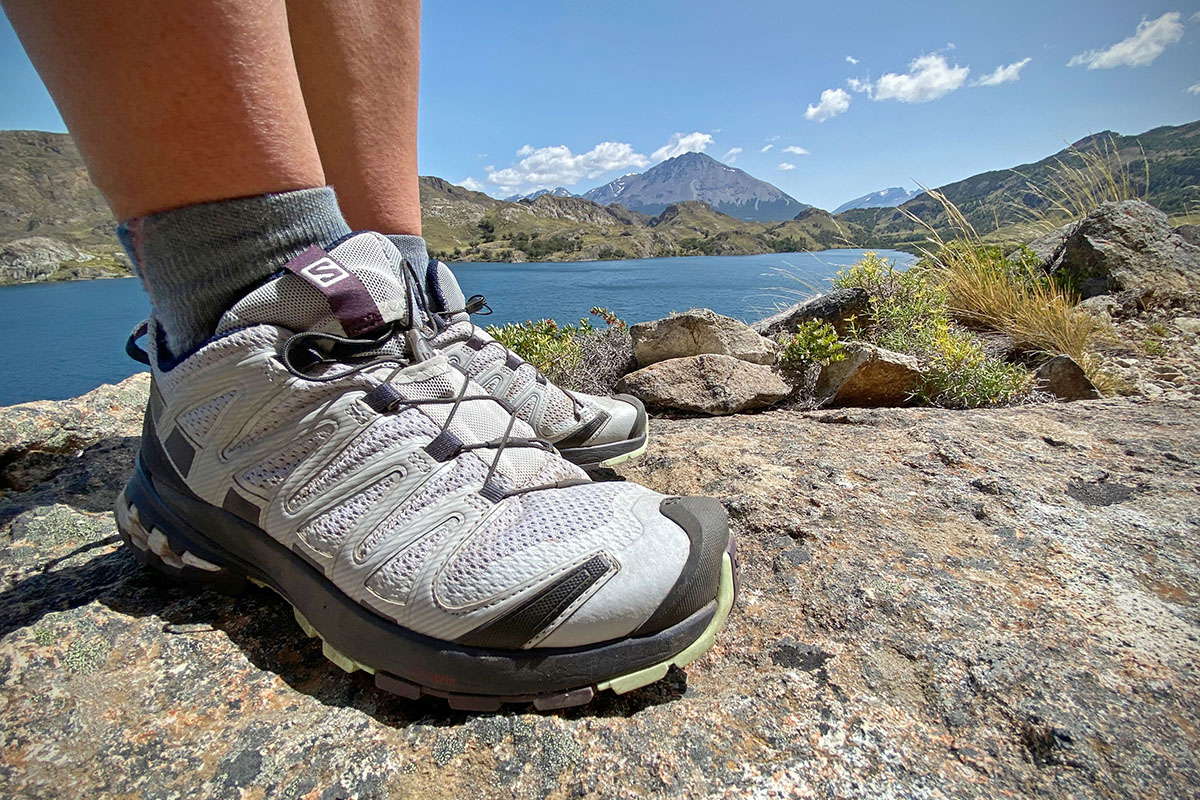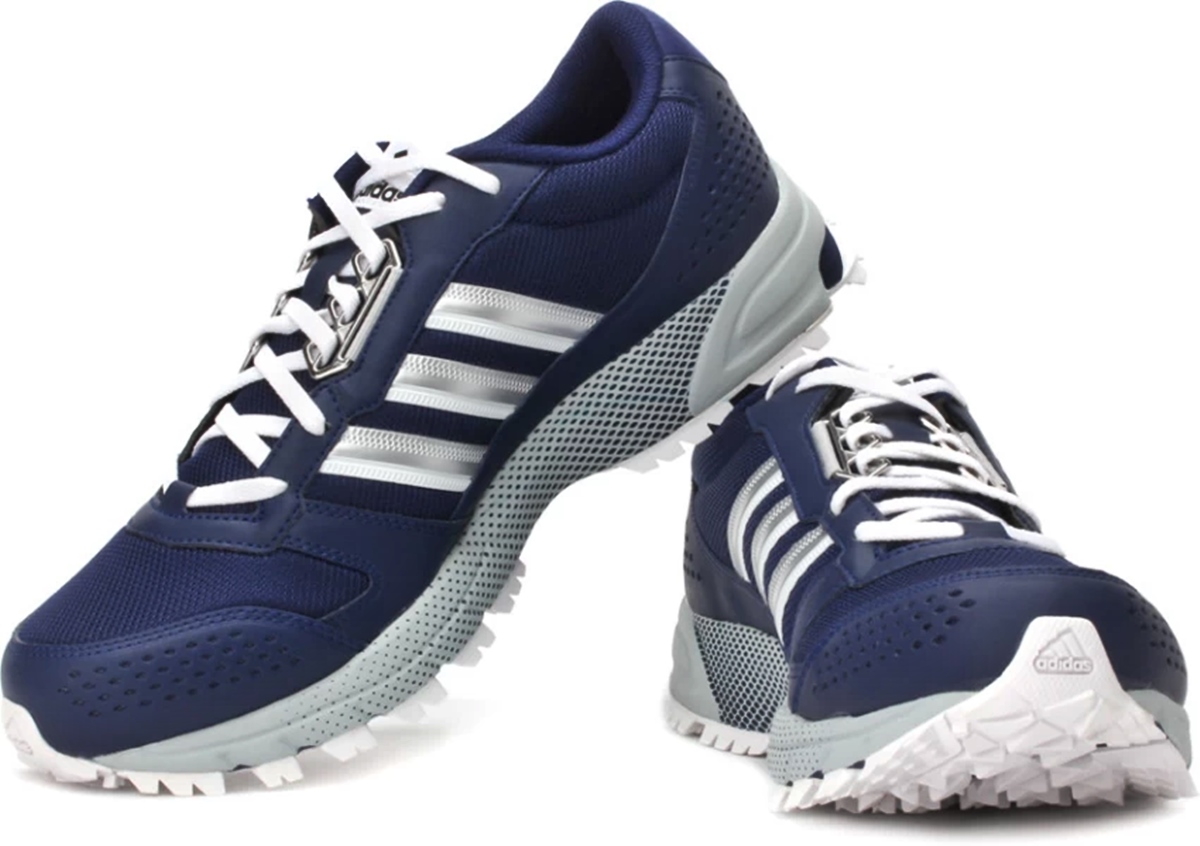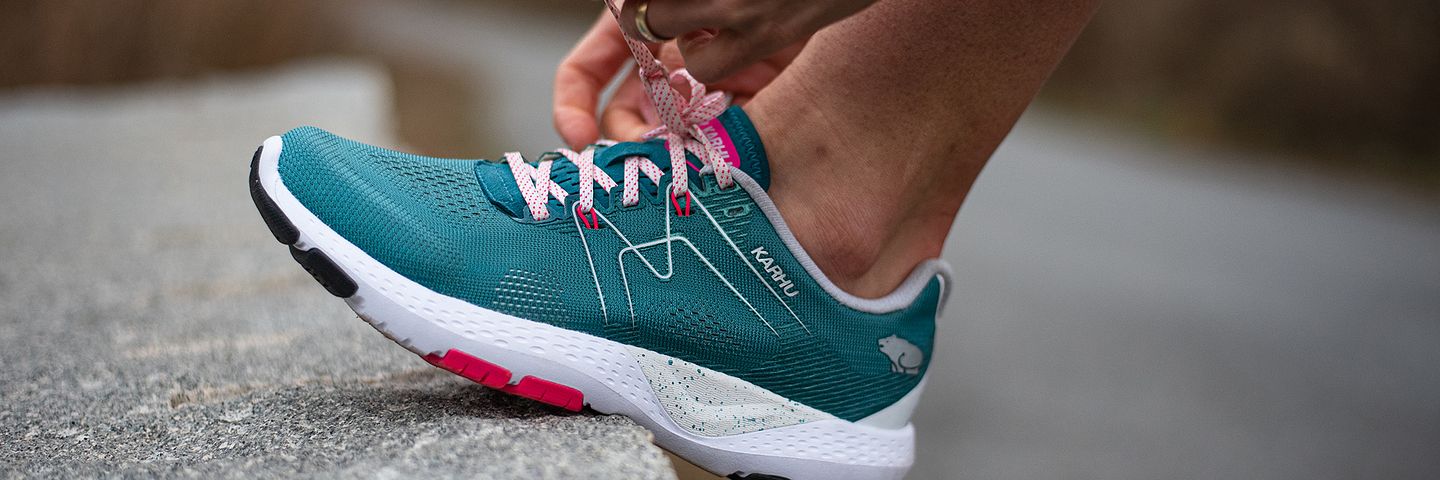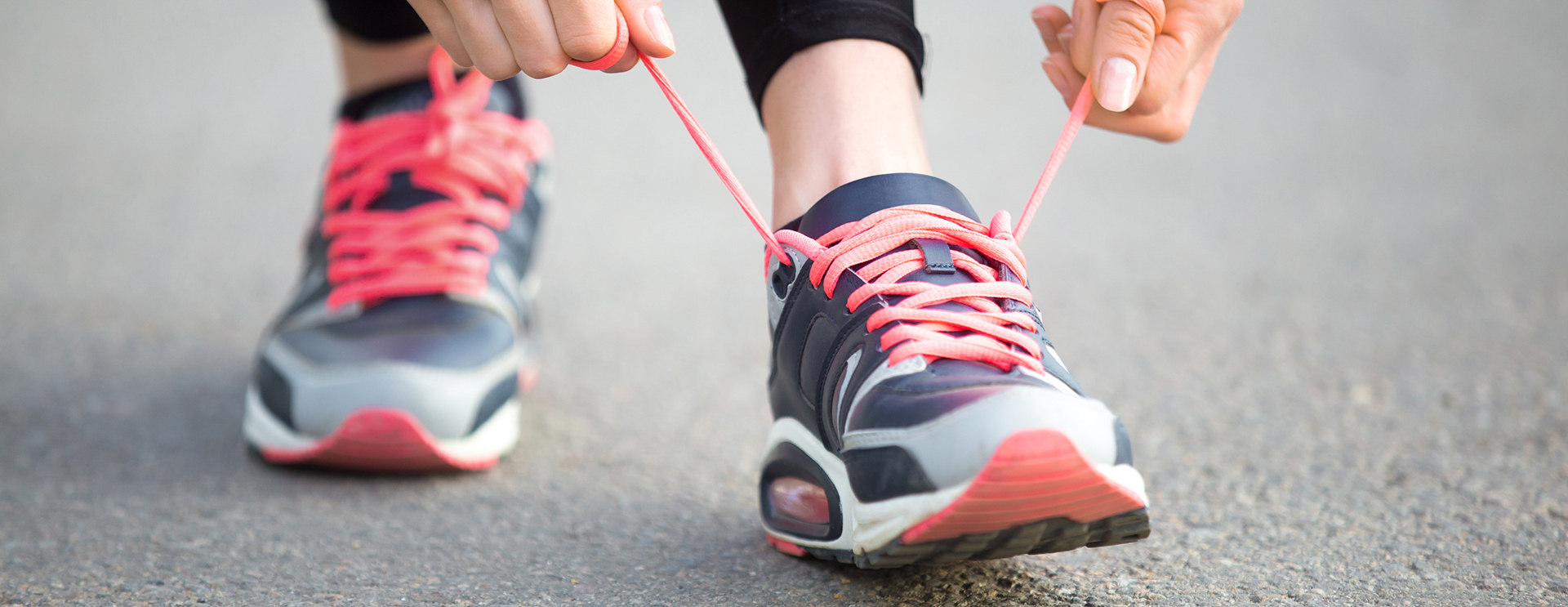

Featured
How To Lace Running Shoes For Wide Feet
Modified: May 22, 2024
Discover the best lacing techniques for wide feet with our featured guide on how to lace running shoes. Achieve maximum comfort and support for your runs.
Introduction
Having wide feet can often make finding the perfect pair of running shoes a challenging task. Ill-fitting shoes can lead to discomfort, pain, and even injury. However, the right shoe lacing technique can greatly improve the fit and comfort of running shoes for individuals with wide feet.
In this article, we will explore the importance of proper shoe lacing for wide feet and introduce different lacing techniques that can help achieve a more secure and comfortable fit. Whether you are a seasoned runner or just starting out, understanding how to lace your running shoes correctly can make a world of difference in your overall running experience.
We will discuss basic crisscross lacing, which is suitable for most runners with wide feet. Additionally, we will cover lacing techniques specifically designed for wide forefeet, such as the gap lacing technique and loop lacing. We will also address lacing techniques to alleviate common foot issues, such as bunions or high arches.
By implementing the right shoe lacing technique, you can prevent unnecessary discomfort and avoid potential foot problems that may hinder your running progress. So, let’s delve into the world of shoe lacing techniques and discover the best way to lace your running shoes for wide feet.
Understanding Wide Feet
Wide feet are characterized by a broader width in the forefoot area. This means that the distance between the ball of the foot and the base of the toes is wider than average. People with wide feet often struggle to find shoes that fit properly, as many shoe models are designed for individuals with a narrower foot width.
There are several factors that contribute to having wide feet. Genetics play a significant role, as foot structure is largely determined by our hereditary traits. Additionally, certain conditions and lifestyle factors can contribute to wider feet, such as obesity, pregnancy, and aging.
Individuals with wide feet may experience several challenges when it comes to finding suitable footwear. Ill-fitting shoes can lead to discomfort, blisters, calluses, and even more serious issues like plantar fasciitis or bunions. It is crucial to address these concerns and find solutions that provide the necessary support and comfort for wide feet.
When it comes to running shoes, the overall fit is of paramount importance. Properly fitting shoes not only enhance comfort but also improve performance and prevent injuries. Therefore, understanding the unique characteristics of wide feet is essential in ensuring the right fit for running shoes.
One of the key aspects of wide feet is the wider forefoot area. This means that the toes and the ball of the foot require more space. Additionally, wide feet often have a higher volume and a greater height from the sole to the top of the foot. Understanding these unique features will help in selecting appropriate running shoes and implementing the correct lacing techniques.
Now that we have a clearer understanding of wide feet, let us explore the importance of proper shoe lacing for individuals with this foot type.
Importance of Proper Shoe Lacing
Proper shoe lacing is often overlooked but is a crucial aspect of achieving a comfortable and secure fit, especially for individuals with wide feet. The way you lace your running shoes can significantly impact the overall comfort, support, and stability of your feet while running.
Here are some key reasons why proper shoe lacing is important for individuals with wide feet:
1. Improved Fit: Wide feet require extra space in the forefoot area. By using the right lacing technique, you can ensure that the shoe adapts to the shape of your foot, providing a snug fit without feeling too tight or constricting. This will help prevent unnecessary slippage and discomfort.
2. Enhanced Stability: Running shoes that are properly laced provide better stability and support for the feet. This is crucial, especially for individuals with wide feet, to prevent injuries that may occur due to excessive foot movement or instability while running.
3. Reduced Pressure Points: Wide feet often have specific pressure points that need to be addressed. Proper shoe lacing can help alleviate pressure on these points, reducing the risk of blisters, calluses, or other foot skin irritations.
4. Customized Fit: Different lacing techniques allow for customization of the fit based on individual foot shape and preferences. This means you can adjust the tension in specific areas of the shoe to accommodate any unique features of your wide feet, such as high arches or bunions.
5. Prevention of Foot Issues: Improperly laced shoes can lead to various foot issues, such as tendonitis, plantar fasciitis, or metatarsalgia. The right lacing technique can help distribute pressure evenly across the foot, reducing the risk of these painful conditions.
Remember, no two feet are the same, and what works for someone else may not necessarily work for you. It is important to experiment with different lacing techniques to find the one that provides the best fit and comfort for your wide feet.
Different Lacing Techniques for Wide Feet
When it comes to lacing your running shoes for wide feet, there are several techniques that can help achieve a secure and comfortable fit. Each technique targets specific areas of the foot to accommodate the wider forefoot and provide the necessary support. Let’s explore some of the most common lacing techniques for wide feet:
1. Basic Crisscross Lacing: This is the standard lacing technique that works well for most runners, including those with wide feet. Start by threading the shoelace through the bottom eyelets and cross them over in a crisscross pattern until you reach the top. This method provides a balanced and secure fit, distributing pressure evenly on both sides of the foot.
2. Wide Forefoot Lacing: For individuals with a wider forefoot, this technique helps create more space in the toe box area. Begin by lacing the shoe as normal, but instead of crossing the laces, run them straight across each other on the middle eyelets. This allows for a wider opening in the toe box while maintaining a secure fit.
3. Gap Lacing Technique: This technique is especially helpful for individuals with a high arch or a prominent bone on the top of the foot. Start by lacing the shoe until you reach the area where you feel pressure or discomfort. Instead of crossing the laces, skip a set of eyelets and lace up the next set. This creates a gap that relieves pressure on the problematic area while still providing a secure fit.
4. Loop Lacing for Wide Feet: This technique is ideal for individuals with wide feet and narrow heels. Start by lacing the shoe normally until you reach the top two eyelets. Instead of crossing the laces, thread them through the top eyelets but leave some slack. Then, loop each lace back through the top eyelet on the same side and tie the laces securely. This creates a loop that holds the foot securely in the shoe without causing discomfort in the wide forefoot.
Remember, these lacing techniques are not one-size-fits-all solutions. It’s essential to experiment with different techniques and adjust them based on your specific foot shape and comfort requirements. The goal is to find the lacing technique that provides the best fit, support, and comfort for your wide feet.
Basic Crisscross Lacing
The basic crisscross lacing technique is a versatile method that works well for individuals with wide feet, providing a secure and comfortable fit. This technique is easy to learn and can be used for most running shoes. Here’s how to do it:
1. Start by inserting one end of the shoelace through the bottom eyelet on the inside of the shoe. Make sure both ends of the lace are of equal length.
2. Take the end of the lace from the right side and feed it through the eyelet directly above it on the left side. Then, take the end of the lace from the left side and feed it through the eyelet directly above it on the right side. You should end up with a crisscross pattern.
3. Continue lacing the shoe using the crisscross pattern until you reach the top of the shoe. Ensure the tension is comfortable but snug as you go along.
4. When you reach the top eyelets, tie the shoelaces securely using a double knot or your preferred knot style.
The basic crisscross lacing technique provides a balanced distribution of pressure across the foot, making it suitable for most runners with wide feet. It allows for adjustability and customization of the fit, ensuring a snug yet comfortable feel.
To further improve the fit and comfort, pay attention to the tension in each crisscross. If you feel any discomfort or pressure points, adjust the tension by loosening or tightening the laces in specific areas of the shoe. This customization can help alleviate any issues related to the wider forefoot and provide a more tailored fit for your wide feet.
Remember, everyone’s feet are unique, and the basic crisscross lacing technique may not work perfectly for everyone. It’s essential to experiment with different lacing techniques and make adjustments based on your individual comfort and preferences. This way, you can find the best lacing method that suits your wide feet and enhances your overall running experience.
Wide Forefoot Lacing
For individuals with a wider forefoot, the wide forefoot lacing technique can help provide extra room and alleviate discomfort in the toe box area. This method allows for a more accommodating fit for wide feet. Here’s how to lace your running shoes using the wide forefoot lacing technique:
1. Begin by inserting one end of the shoelace into the bottom eyelet on the inside of the shoe. Make sure both ends of the lace are of equal length.
2. Start lacing your shoe normally, crossing the laces over each other in a crisscross pattern until you reach the area of your foot that feels tight or uncomfortable. This is typically around the ball of the foot or the widest part of your forefoot.
3. Instead of continuing with the crisscross pattern, run both ends of the lace straight across from one side to the other. This creates a wider space and allows for more room in the toe box area.
4. Resume the crisscross lacing pattern on the remaining eyelets and lace the shoe until you reach the top.
5. Tie the shoelaces securely using a proper knot style of your preference.
The wide forefoot lacing technique provides extra room in the forefoot area, accommodating the wider part of your foot. By skipping the crossing of the laces in the particular section, you create more space and reduce pressure on the wider forefoot. This can help alleviate discomfort and allow for a better fit.
As with any lacing technique, it’s important to pay attention to the tension and adjust it accordingly. If you feel any discomfort or pressure points, you can loosen or tighten the laces in specific areas to customize the fit to your liking.
Remember, wide forefoot lacing is not a one-size-fits-all solution. It’s essential to try different lacing techniques and find the one that works best for your wide feet. Experiment with the tension and adjustments until you achieve the most comfortable and secure fit that enhances your running experience.
Gap Lacing Technique
The gap lacing technique is a helpful method for individuals with wide feet who experience pressure or discomfort on the top of the foot, typically due to a high arch or prominent bone. This technique creates a gap in the lacing, providing relief and reducing pressure in the affected area. Here are the steps to perform the gap lacing technique:
1. Begin by inserting one end of the shoelace into the bottom eyelet on the inside of the shoe. Make sure both ends of the lace are of equal length.
2. Lace your shoe normally, crossing the laces over each other in a crisscross pattern until you reach the area where you feel pressure or discomfort.
3. Instead of continuing with the crisscross pattern, skip one set of eyelets on the affected area of your foot. This will create a gap in the lacing, providing relief from pressure.
4. Continue lacing normally on the remaining eyelets until you reach the top of the shoe.
5. Tie the shoelaces securely using your preferred knot style.
By skipping one set of eyelets, the gap lacing technique creates a space in the lacing that reduces pressure on the top of the foot. This can be particularly beneficial for individuals with a high arch or a prominent bone that causes discomfort.
It’s important to note that the gap lacing technique may require some adjustment and experimentation to find the right amount of gap that provides sufficient relief. You can adjust the tension and distribution of the laces by loosening or tightening specific sections to achieve the desired fit and comfort.
Remember, the gap lacing technique is not limited to just one area. If you experience pressure or discomfort in multiple areas, you can implement the same technique on those specific sections as well.
Finding the right lacing technique might require some trial and error, so don’t hesitate to make adjustments until you find the optimal fit. The gap lacing technique can be a helpful solution for individuals with wide feet who face discomfort on the top of their feet.
Loop Lacing for Wide Feet
For individuals with wide feet and narrow heels, the loop lacing technique can provide a secure fit without causing discomfort or pressure in the wide forefoot. This technique helps to hold the foot securely in the shoe while allowing for more room in the toe box area. Here’s how to use the loop lacing technique:
1. Begin by inserting one end of the shoelace into the bottom eyelet on the inside of the shoe. Make sure both ends of the lace are of equal length.
2. Lace your shoe normally, crossing the laces over each other in a crisscross pattern until you reach the area just below the top two eyelets.
3. Instead of crossing the laces at the top two eyelets, take each lace and insert them into the respective top eyelets on the same side. This should create a loop on each side of the shoe.
4. Thread each end of the lace through the loop on the same side, and then tighten the laces to secure the loops in place.
5. Tie the shoelaces securely using your preferred knot style.
The loop lacing technique allows for a customized fit by securely holding the heel in place while providing more room in the forefoot. This is especially beneficial for individuals with wide feet and narrow heels, as it helps prevent slippage without causing discomfort or pressure in the wide forefoot area.
Additionally, the loops can be adjusted to achieve the desired level of tightness or looseness, depending on individual comfort preferences. You can experiment with the tension of the loops to find the optimal fit for your feet.
Remember, the loop lacing technique is just one option for addressing the specific fit challenges of wide feet and narrow heels. It’s important to try different lacing techniques and make adjustments to find the most comfortable and secure fit for your individual foot shape.
Keep in mind that everyone’s feet are unique, and what works for one person may not work for another. So, don’t hesitate to experiment with different techniques and make modifications based on your own comfort and preferences. The goal is to find the lacing technique that provides the best fit, support, and comfort for your wide feet and narrow heels.
Lacing Techniques for Specific Foot Issues
Foot issues such as bunions, high arches, or other specific concerns can greatly impact the comfort and fit of running shoes for individuals with wide feet. Luckily, there are lacing techniques that can help address these specific foot issues and provide relief. Here are some lacing techniques for common foot concerns:
1. Bunion Lacing: Bunions can cause discomfort and pain on the side of the foot. To alleviate pressure on bunions, try the “window” lacing technique. Begin by lacing the shoe normally until you reach the area of the bunion. From there, create a loop by lacing the lace back through the eyelet on the same side. Do this on both sides of the shoe to create a “window” that avoids putting pressure on the bunion.
2. High Arch Lacing: High arches can often create pressure on the top of the foot. To address this, try using the gap lacing technique discussed earlier. By skipping a set of eyelets in the middle of the shoe, you can create space and reduce pressure on the top of your foot.
3. Heel Slippage: If you experience heel slippage, especially in shoes intended for wider feet, you can try the “lock lacing” technique. Start lacing your shoe normally until you reach the top two eyelets. Instead of crossing the laces, thread each lace through the opposite side’s top eyelet, creating a loop on each side. Then, crisscross the laces and thread them through the loops before tying them. This creates a secure lock around the ankle, preventing heel slippage.
4. Arch Pain or Flat Feet: Arch pain or flat feet can benefit from the “high arch lacing” technique. Start by lacing your shoe normally until you reach the area of the arch pain or flat feet. From there, create loops on each side by threading the lace through the next set of eyelets, coming out on the same side. Crisscross the laces and thread them through the loops before continuing to lace the rest of the shoe.
These lacing techniques are examples of how specific foot issues can be addressed and relieved through different lacing methods. It is important to experiment and adjust these techniques based on your individual needs and comfort.
Remember to listen to your body and make necessary adjustments for optimal fit and comfort. If foot pain persists or worsens, it is always recommended to consult with a healthcare professional or a podiatrist for further evaluation and guidance.
Conclusion
When it comes to running shoes for wide feet, proper shoe lacing can make a significant difference in fit, comfort, and overall running experience. The right lacing technique can address the unique challenges faced by individuals with wide feet, such as pressure points, discomfort, and instability.
Throughout this article, we explored the importance of proper shoe lacing and introduced various lacing techniques specifically tailored for wide feet. We discussed the basic crisscross lacing technique, which is suitable for most runners, and delved into lacing techniques for wide forefoot, gap lacing, and loop lacing for individuals with wide feet and narrow heels. Additionally, we highlighted lacing techniques for specific foot issues, such as bunions, high arches, and heel slippage.
It is important to remember that every individual’s feet are unique, and what works for one person may not work for another. Experimentation with different lacing techniques, adjustments in tension, and customization based on personal comfort are crucial in finding the perfect fit for your wide feet.
In addition to proper shoe lacing, it is also essential to select running shoes that are specifically designed for wide feet. Consider factors such as toe box width, arch support, and overall shoe design to ensure the best fit and comfort.
By implementing the appropriate lacing technique and wearing properly fitting running shoes, you can prevent discomfort, reduce the risk of injuries, and maximize your running performance. Remember to listen to your body and make adjustments as needed to ensure a comfortable and enjoyable running experience with your wide feet.
So, lace up your running shoes using the techniques we discussed, head out to hit the pavement, and enjoy the freedom of running with optimal support and comfort for your wide feet. Happy running!
